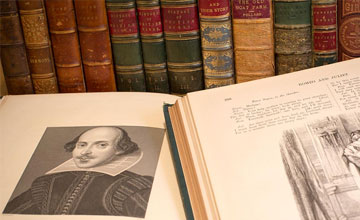
Elizabeth M. Kempton
- Courses2
- Reviews4
- School: Saint Louis University
- Campus:
- Department: Literature
- Email address: Join to see
- Phone: Join to see
-
Location:
1 N Grand Blvd
St. Louis, MO - 63103 - Dates at Saint Louis University: May 2013 - April 2014
- Office Hours: Join to see
Biography
Saint Louis University - Literature
Lecturer in English at College of DuPage and Adjunct Instructor at Kishwaukee College
Elizabeth
Kempton
Chicago, Illinois
My major fields of instruction include composition, literature, medieval literature, gender studies, and ESL and developmental composition.
As a researcher, I focus on gender and monstrosity in early medieval Ireland, with a particular interest in mythological material. I also tend to write a good deal on gender and monstrosity in contemporary fantasy and science fiction.
Experience
Education
University of Illinois at Urbana-Champaign
Bachelor's Degree
English and Rhetoric
Boston College
Master's degree
English Language and Literature/Letters
Boston College
Graduate Instructor
I taught freshman composition and served as TA for a Celtic mythology class.St. Louis University
Doctor of Philosophy (PhD)
English Language and Literature/Letters
St. Louis University
Graduate Instructor
I taught a number of classes including composition and literature. I also worked at the writing center. I taught in second language and native speaking classrooms.
Publications
Challenging Masculine Discourses of Violence: Posthumanist Approaches to the Figure of the Morrígan in Táin Bó Cúailnge
Hortulus
This essay utilizes cyborg theory, derived from the work of Donna Haraway, to explore the ways in which the Morrígan, an early Irish battle and prophetic figure, serves as a destabilizing presence with the Táin Bó Cúailnge [The Cattle Raid of Cooley], a work traditionally used to define Irish heroic masculinity. Through her multiplicity of forms and occasional disembodiment, the Morrígan presents a cyborgian sense of networked identity, implying an ethical responsibility between the subject and their environment. Furthermore, within the Táin Bó Cúailnge, the Morrígan’s prophecies also serve to highlight the bodily destruction and chaos caused by war, rather than a traditional focus on victory or political power transferred by war, and thus act as a critique of violence within the Irish social system. The prophecy itself extends her sense of embodiment both physically and temporally. This hypermobility, in turn, functions as a sort of technical prosthesis: as a haunting feminine presence she embeds herself within the battlefield, a site for the formation of masculine virtue within this text, challenging its gendered spaces, The Morrígan is by no means a pacifist figure, but her bodily transformations, use of prophecy and the content of her prophecies serve to highlight and question the structures of martial violence upon which the Tain Bo Cuailnge is built. My reading contributes to an understanding of the complexity of female deity figures within Irish mythology and the questioning of early Irish social and literary political systems that are deeply ingrained within the Táin Bó Cúailnge.
Challenging Masculine Discourses of Violence: Posthumanist Approaches to the Figure of the Morrígan in Táin Bó Cúailnge
Hortulus
This essay utilizes cyborg theory, derived from the work of Donna Haraway, to explore the ways in which the Morrígan, an early Irish battle and prophetic figure, serves as a destabilizing presence with the Táin Bó Cúailnge [The Cattle Raid of Cooley], a work traditionally used to define Irish heroic masculinity. Through her multiplicity of forms and occasional disembodiment, the Morrígan presents a cyborgian sense of networked identity, implying an ethical responsibility between the subject and their environment. Furthermore, within the Táin Bó Cúailnge, the Morrígan’s prophecies also serve to highlight the bodily destruction and chaos caused by war, rather than a traditional focus on victory or political power transferred by war, and thus act as a critique of violence within the Irish social system. The prophecy itself extends her sense of embodiment both physically and temporally. This hypermobility, in turn, functions as a sort of technical prosthesis: as a haunting feminine presence she embeds herself within the battlefield, a site for the formation of masculine virtue within this text, challenging its gendered spaces, The Morrígan is by no means a pacifist figure, but her bodily transformations, use of prophecy and the content of her prophecies serve to highlight and question the structures of martial violence upon which the Tain Bo Cuailnge is built. My reading contributes to an understanding of the complexity of female deity figures within Irish mythology and the questioning of early Irish social and literary political systems that are deeply ingrained within the Táin Bó Cúailnge.
The Morrígan, the Land, and a Surprising Critique of Sovereignty and Warfare in Early Ireland
Essays in Medieval Studies
Early Irish scholars have long commented on the ways in which the figure of the Irish sovereignty goddess becomes one with the land. However, these discussions have often centered around the teleological perspective of Irish nationalism, Yeats, and other much later writers. This project would seek to illuminate connections between the land and much more ambiguous female figures, such as the early Irish death and battle goddess, the Morrígan or Badb. These women also often give their names to elements of the landscape and additionally shape-shift readily into a wide range of animal forms. Drawing from Donna Haraway’s “When Species Meet”, I suggest that these figures form “knots” of networked identity between land, animal, and human. These knots create ethical relationships between man and his environment as the two are, in fact, always one body. Although this might seem unusual for violent figures such as the Morrígan, this project will reveal that although the Morrígan herself uses violence, her prophecies actually work to focus the reader on the violence inherent in warfare rather than on a more traditional concept of victory or martial prowess. Her bodily transformations also force upon the reader a sense of interconnectedness between the human and the animal and the land, while simultaneously denying the reader any sense of a “whole” or “complete” human body. This project will also explore the ways in which the behavior the Morrígan and other death messenger figures mirrors that of the sovereignty goddess. As Gearóid Ó Crualaoich pointed out, there is a clear connection between the cailleach or death messenger and the sovereignty figure. Similarly, the Morrígan enacts the role of sovereignty with the Dagda, but makes more visceral and tangible the violence necessary in attaining kingship. She exposes the violence already latent in any king’s claim to rulership in the period.
